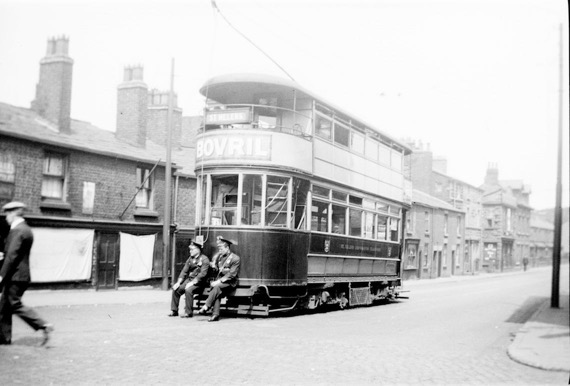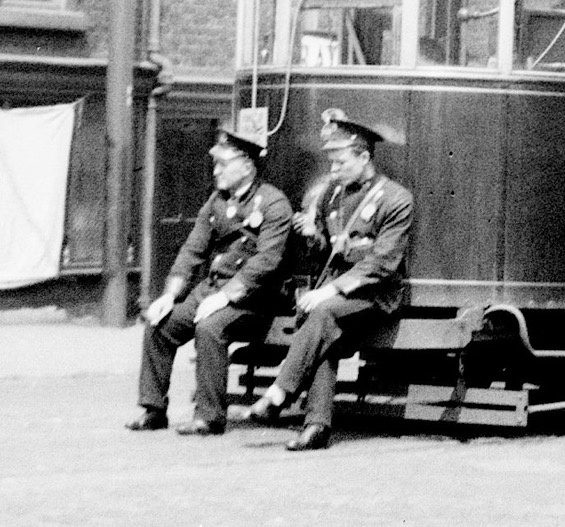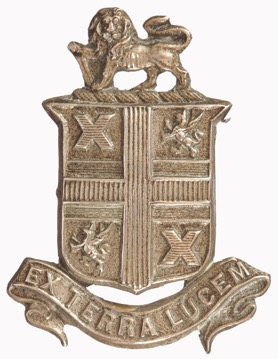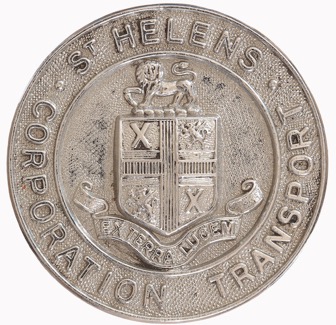St Helens Corporation Tramways
History
St Helens Corporation became a tramway owner on the 1st of April 1897, when it purchased the tracks of the St Helens and District Tramways Company, the operator of the town's standard-gauge steam tramway (see link). Although operation of the system was immediately leased back to the company, the purchase was in fact a prelude to the construction of a municipally owned electric tramway system, the corporation formally deciding to proceed with the conversion six months later in October 1897.
At this time, the corporation was undecided as to whether it would operate the new system itself or lease it to a company. Somewhat surprisingly, given the long and often rancorous relationship between the council and the company, the corporation agreed to lease operation for 21 years — from the 1st October 1898 — to the New St Helens and District Tramways Company, the latter simply being the old company recapitalised. The task of reconstructing the steam tramway began later that year, and the first electric trams commenced running on the 20th July 1899. It is thought that the last steam tram ran on or around the 6th April 1900, though the precise date seems not to have been recorded.
The relationship between the corporation and the company remained a fraught one, with the former seemingly intent on finding every opportunity to lodge a complaint. It was therefore perhaps no surprise when, in 1915, the corporation made it clear to the company that the lease would not be extended when it expired on the 30th September 1919. The corporation duly took full control of the tramway on the 1st October 1919, buying the operating infrastructure (e.g., the tramcars) from the company.
The corporation could not however have picked a worse time to take over. The company had of course reduced investment to the bare minimum, and on top of this came the challenges of the Great War, with hugely increased passenger numbers and restrictions on infrastructure replacement, which enforced a 'make do and made' approach. As a result, the corporation inherited a very run-down system with a significant renewals and maintenance backlog, all at a time of high costs and impending unregulated bus competition. The corporation nevertheless chose to invest in the tramway, rebuilding the tramcars and renewing worn-out track.
At its maximum, the St Helens Corporation system extended to 18.74 miles, comprising lines from the centre of St Helens: westwards to Brook Bridge via both Prescot and Rainhill; northwestwards to Denton's Green; northwards to Windle; northeastwards to the Rams Head in Haydock; eastwards to Parr; and southeastwards to St Helens Junction. St Helens tracks were connected to those of Liverpool Corporation Tramways at Brook Bridge, and to those of the South Lancashire Tramways Company at Haydock. The StHCT also leased an additional 1.77 miles of line between Haydock and Ashton-in-Makerfield from the SLTCo. Through running tended to be limited (both in extent and duration), though LCT, SLTCo and Wigan Corporation Tramways vehicles did make an appearance in St Helens, whilst those of the StHCT reached Ashton-in-Makerfield and Wigan (via SLTCo tracks).
In the 1920s, the corporation began to supplement its tramway services with buses, introducing its first permanent service on the 17th August 1923, and expanding them steadily thereafter, including joint running with other operators, both municipal and private. As an electricity producer, the corporation was also interested in trolleybuses, and obtained its first powers in this regard in 1924; it was not however until the 11th July 1927 that the first service was introduced between Nutgrove and Prescot, the tram services having been withdrawn the previous March (and replaced by buses in the interim). The name of the undertaking was changed in July 1930 to St Helens Corporation Transport to reflect the changing service provision.
Although other tram routes were steadily converted as they became due for renewal, tramway abandonment was not actually formalised until the 28th July 1933, the last tram running on the 31st March 1936. This was not however destined to be the last tram of all over St Helens Corporation tracks, as a short length of track in Prescot was leased to Liverpool Corporation, the last tram over this section — operated by the LCT — ran on the 25th June 1949.
Uniforms
Photographs of St Helens Corporation Tramways electric tramcars, either during the years the system was operated by the New St Helens and District Tramways Company (1897 to 1919) or by the corporation itself (1919 to 1936), are surprisingly scarce, and those depicting staff are rarer still. Given the paucity of photographic evidence, it is currently impossible to describe either the evolution of the uniforms or the associated badges.
In the years following the corporation takeover of 1919, tramcar crews wore double-breasted, lancer-style tunics with five pairs of buttons (narrowing from top to bottom) and stand-up collars; the latter almost certainly carried badges of some description, most probably a combination of system initials and employee numbers, though these cannot unfortunately be made out on the surviving photographs. It is unclear what badge was carried on the tensioned-crown peaked caps prior to 1930, though a small municipal device badge may possibly have been used. At some point after the change in name of the undertaking in 1930, a circular cap badge was introduced that bore a municipal device in the centre with the full system title — 'ST HELENS CORPORATION TRANSPORT' — around the outside.
Conductors and motormen were also issued with long double-breasted greatcoats, which bore four pairs of buttons; once again, no badges of any description appear to have been carried. They also wore a round licence badge when on duty.
Photographs of inspectors have not survived, so it is currently not possible to state what uniforms they wore.
Further reading
For a history of the system, see: 'St Helens Tramways' by E K Stretch; St Helens Corporation Transport (1968).
Images
Motormen and conductors
A rare photograph of a St Helens Corporation Tramways tram crew, seated on the fender of Tramcar No 2 — photo undated, but probably taken in the early 1930s (No 2 was withdrawn in 1934). Photo by M J O'Connor, courtesy of the National Tramway Museum. 
A blow-up of the above photo showing the motorman and conductor in more detail. Both men are wearing lancer-style tunics and tensioned-crown peaked caps, along with municipal licences.
St Helens Corporation Tramways/Transport collar badge — nickel. It is likely, though by no means certain, that this one-piece system initials badge was worn on the collars of tramcar crew jackets during the 16 years of municipal operation. Author's Collection.
St Helens Corporation Tramways/Transport collar/cap badge — nickel. It is possible that this municipal device badge was worn on either the uniform jacket collars or the caps during at least some of the 16 years of municipal tramway operation. Author's Collection.
St Helens Corporation Transport cap badge — chrome. It is likely that this badge was introduced following the undertaking's change of title in 1930. Author's Collection.